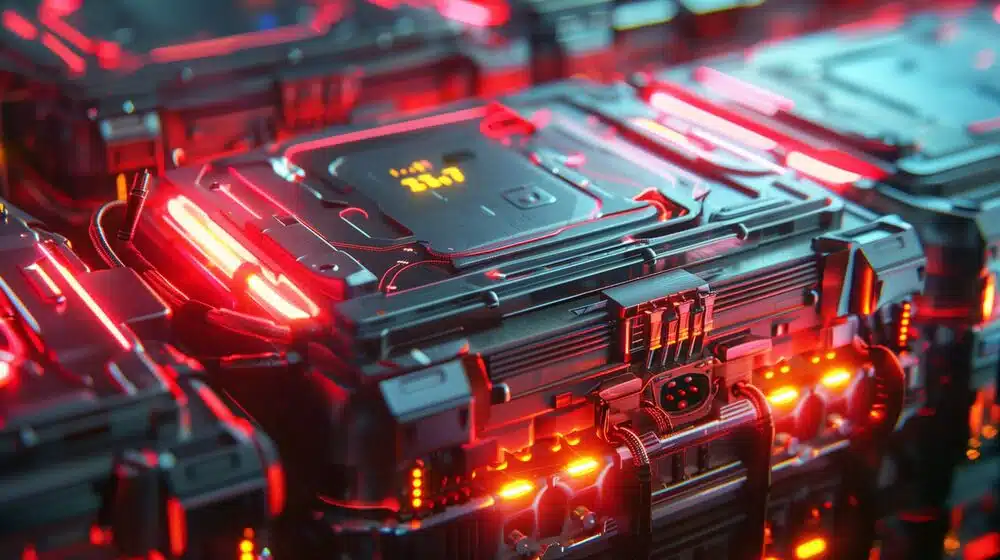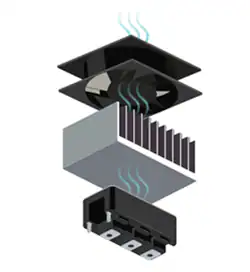
Electric vehicles (EVs) have been around as long as gas-powered vehicles, but they have only recently become mainstream. With major advancements in electric vehicle technology and substantial government support, the demand for electric vehicles has skyrocketed. The EU’s 2035 ban on internal combustion vehicles[1] and the 2025 mandate for fast EV charging stations every 60 kilometers[2] highlight this anticipated demand surge. As EVs become the primary mode of transportation, battery range and faster charging will be critical to the global economy’s functionality. Enhancing these EV charging systems will necessitate technological advancements in various areas, particularly in thermal management.
AC vs. DC in EV Charging
As the demand for faster EV chargers increases, there have been various changes, both minor and significant, in the approach to EV charger design. One notable shift is towards DC chargers. Though all battery systems use DC electricity, the key difference in these systems is the location of power rectification from AC to DC. Traditional AC chargers, commonly used in residential settings, primarily serve as connectors that communicate, filter, and control AC power flow to the vehicle, where an onboard DC charger then rectifies the power and charges the batteries. In contrast, DC chargers perform the rectification process externally before delivering high-voltage DC power to the vehicle. The main advantage of DC chargers is that they remove many weight and size limitations by relocating the power conditioning hardware outside of the EV and into an external structure.
By eliminating weight and size constraints, DC chargers can integrate additional components to enhance both current throughput and operating voltage. These chargers use advanced semiconductor devices for power rectification, along with filters and power resistors, all of which generate significant heat. Although the filters and resistors contribute to heat production, the primary heat source in an EV charging system is the insulated gate bipolar transistor (IGBT), a semiconductor device that has become increasingly prevalent over the past few decades. While this powerful device has created numerous opportunities in the charging landscape, effectively cooling it remains a critical concern.
An IGBT combines the features of a field-effect transistor (FET) and a bipolar junction transistor (BJT). Its ability to handle high voltages, low on-resistance, rapid switching speeds, and impressive thermal robustness makes it ideal for high-power applications like EV chargers. In these charging circuits, IGBTs act as rectifiers or inverters, frequently switching on and off and generating significant heat.
The current thermal challenge is the substantial increase in heat dissipation by IGBTs, which has grown more than tenfold from 1.2kW thirty years ago to 12.5kW today, with further increases anticipated. Figure 1 illustrates this increase in terms of power per surface area. In comparison, the highest power CPUs today reach only around 0.18kW, or 7kW/cm2, highlighting a significant difference.

Two factors aid in cooling IGBTs: their surface area is about twice that of a CPU, and they can operate at higher temperatures—up to 170°C compared to 105°C for modern CPUs.
The most straightforward and reliable thermal management solution combines heat sinks with forced air (Figure 2). While the thermal resistances within a semiconductor device like an IGBT are typically very low, the thermal resistance between the device and the surrounding air is significantly higher. Adding a heat sink for ball grid array (BGA) devices greatly increases the surface area available for heat dissipation, reducing thermal resistance. Moving air over a heat sink further enhances its effectiveness. Reducing the thermal resistance at the device-air interface, which is the largest in the system, is crucial. A passive heat sink, if properly installed, is fail-proof, and a fan—a well-established and reliable technology—adds further cooling efficiency. Same Sky has designed heat sinks up to 950mm x 350mm x 75mm for EV charging applications. These can handle less-demanding requirements passively or more demanding ones actively with forced air. Explore Same Sky’s complete range of AC fans and DC fans.

Liquid cooling options are also available for cooling dense heat sources like IGBTs. Water-cooling systems can achieve the lowest thermal resistances, making them attractive. However, they come with higher costs and complexity and still rely on heat sinks and fans to remove heat from the overall system. As a result, direct cooling of IGBTs using heat sinks and fans remains the preferred approach. Ongoing research focuses on enhancing air cooling technologies for IGBTs.
External and Environmental Factors
EV charging stations are frequently installed outdoors and are exposed to diverse environmental conditions. Designing weatherproof enclosures with proper ventilation and protection against elements such as rain and extreme temperatures is essential for maintaining optimal thermal conditions. Airflow paths and vents must be carefully designed to prevent water ingress while ensuring sufficient airflow.
A major external factor to consider is solar heating, which can significantly raise the internal ambient temperature of the charger enclosure. While this poses a significant concern, the most effective solution is relatively simple: well-designed shading with adequate airflow between the shading and the charging unit can significantly lower the ambient temperature around the charger.
Thinking Ahead
In recent years, EV adoption has surged globally, with demand continuing to grow rapidly across various technologies. As EVs become more common on the roads, the proliferation of charging stations will follow suit. Efficient and well-functioning chargers are essential to developing a robust charging infrastructure. Additionally, cost efficiency will play a significant role in the adoption rate by individuals and businesses alike.
As the number of EVs and chargers is expected to rise, the underlying technologies will also evolve and improve. This includes potential increases in charging power and capacity, evolving software and hardware standards, and accommodating unforeseen innovations. Ensuring that thermal management systems can adapt to these evolving demands is crucial.
Electric vehicle chargers face thermal management hurdles similar to other high-power electronic devices. However, the high-power density of IGBTs used in these chargers, combined with increasing performance demands, presents unique challenges. As charging speeds and battery capacities continue to advance, the need for effective and safe charger designs will become more critical, placing greater demands on thermal management engineers and designers. To help with this, Same Sky offers a comprehensive range of thermal management components and industry-leading thermal design services to meet these evolving needs.
Author: Jeff Smoot, VP of Engineering, Same Sky
Since joining Same Sky in 2004, Jeff Smoot has revitalized the company’s Quality and Engineering departments with an emphasis on developing, supporting, and bringing products to market. With a focus on the customer’s success, he also spearheaded the establishment of an Application Engineering team to provide enhanced in-the-field and online engineering design and technical support to engineers during their design process.






